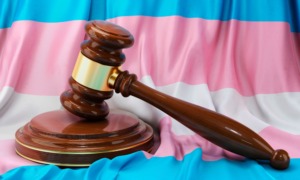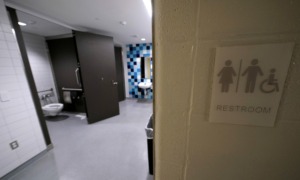
Policymakers and funders should consider the diverse backgrounds and experiences of youth involved in the sex trade when deciding how to provide services, says a new report from the Center for Court Innovation.
Researchers found that the “prevailing narrative” of young girls controlled by pimps does not fully capture the lives of youth involved in the sex trade. They interviewed nearly 1,000 youth ages 13 to 24 who trade sex for money, housing, food or other goods in six U.S. cities.
Many of the youth interviewed are male or transgender, most do not have pimps, and many feel they have chosen their lives, if from among very limited options, according to the report funded by the Office of Juvenile Justice and Delinquency Prevention.
“Helping these various subgroups escape ‘the life’ will require more than a single, generic model; it will require policymakers to create multifaceted initiatives that grapple with the realities on the ground — including how this young population conceives of itself,” the researchers wrote.
Rachel Swaner, associate director of research at the Center and a co-author of the report, said service providers come at the issue from various angles. Some are focused on a single mission of helping youth in the sex trade, while others work with a broader population, such as homeless youth or LGBT youth, that includes some young people who are involved in the sex trade.
[Related: Lost in the System: Girls, Foster Care and the Commercial Sex Trade in L.A. County]
But effective organizations share some commonalities, such as being mindful of the language they use to talk about the sex trade and being responsive to how youth think about and talk about their lives. For example, the terms “trafficked” or “commercially exploited” don’t resonate with all youth and may stop them from seeking services, she said.
“If they don’t feel exploited, they may feel alienated,” she said.
Similarly, a focus on girls or young women will not reach everyone, Swaner said.
In the study, 60 percent of youth identified as female, 36 percent as male, 4 percent as transgender female and 1 percent as transgender male.
To ensure all youth receive attention, the researchers suggest funders and policymakers more deliberately fund agencies not dedicated to one gender or those that focus on the needs of cisgender males or transgender females, in addition to agencies dedicated to cis women. Cisgender people identify with the gender they were assigned at birth.
The researchers also used information from the interviews and data from law enforcement to estimate the number of youth under age 18 involved in the sex trade: about 8,914 to 10,507. Because of the limitations of the data, the researchers also included a wider possible range of 4,457 to 20,995 youth.
While there have been national estimates that are much higher than the range in the study, those have tended to focus on youth “at risk” and have had limitations such as overlapping categories of risk, Swaner said.
The study also found:
- the average age when youth traded sex for the first time was 15.8 years old;
- there were few significant differences between youth younger than 18 and those older;
- 30 percent of youth were parents; and
- the average age when youth reported first leaving home was 15.
In addition, when asked about their needs, youth tended to focus more on survival essentials such as employment, housing or food than on counseling or addiction and health services.
The finding highlights the connection between poverty and the sex trade and points to the need to address those essentials in any effort to provide services, the researchers said.
More related articles:
Different Law, Different Experience for Sexually Exploited Children
The Streets Bring Dire Lessons for the Young Homeless
Services for LGBTQ Youth Who Have Survival Sex Are Inadequate: New Report































